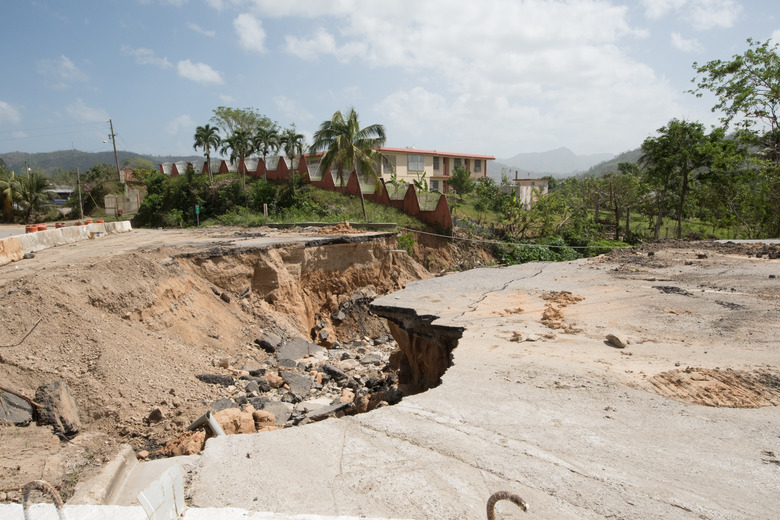Effects Of A Mudslide
Mudslides are fast-moving torrents of mud and rock, which are no longer capable of defying gravity. Prolonged heavy rain or volcanic activity normally cause mudslides and such torrents are among the most destructive forces in nature. Next to nothing can be done to prevent a mudslide once it starts, and the power of it has an effect on everything in its path.
Land
Land
Mudslides move at more than 20 mph and contain not just mud, but rocks, trees and other debris. This means they can rip land to pieces, leaving deep gullies and large mud deposits. Mudslides can devastate agricultural land: all crops will be destroyed. It is not all bad news as mudslides also bring rich nutrients down to lower ground, so once the mudslide passes the ground can be more productive.
Property
Property
Due to the pace mudslides move at, even buildings are not entirely safe. Concrete and brick buildings in cities and towns are normally safe due to solid foundations and the probability of the slide stopping beforehand. Outbuildings — watersheds, stables, anything not attached to a main house — and farm structures are much more at risk as they may not be as strong and will bear the full force of the slide.
Infrastructure
Infrastructure
In the same way that they destroy property and land, mudslides can also destroy infrastructure in the area. This can include ripping up roads, damaging pipes and bringing down power and communication lines. Electric pylons and communication lines are particularly vulnerable as they have little or no foundation. Roads being destroyed may also hamper relief efforts.
People
People
According to the California Geological Survey, between 1978 and 2003 more than 100 people were killed in the state as a result of mudslides. These people were directly in the path of the slide or those living in rooms below ground level.
Rivers
Rivers
Eventually, mudslides tend to reach an area where they cannot cross, such as rivers. In this situation, the mud and rock flow into the river and flow out to the ocean. This can cause large silt deposits on the river bed — harmful to marine plants and animals, animals relying on the water and local human populations. The eventual upside is that the nutrients brought down by the slide will improve the quality of plant growth in the water.
Cleanup
Cleanup
All of this destruction has to be cleaned up after the slide has subsided. Cleanup costs time and money. Disaster relief funds are normally set up when these events occur. Specialists are brought in to help, and the U.S., like other developed nations, has a strong system in place to help affected areas get back to normal. As with other natural disasters, like earthquakes and tsunamis, it is developing nations that suffer the most as there are fewer plans in place.
Cite This Article
MLA
Green, Simon. "Effects Of A Mudslide" sciencing.com, https://www.sciencing.com/effects-mudslide-8660158/. 22 November 2019.
APA
Green, Simon. (2019, November 22). Effects Of A Mudslide. sciencing.com. Retrieved from https://www.sciencing.com/effects-mudslide-8660158/
Chicago
Green, Simon. Effects Of A Mudslide last modified March 24, 2022. https://www.sciencing.com/effects-mudslide-8660158/
